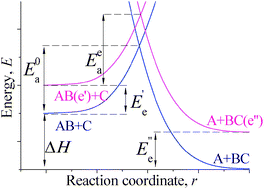Theoretical analysis of reaction kinetics with singlet oxygen molecules
Abstract
A comparative analysis of predictive ability of three approaches to estimate the rate constants of reactions of H2, H,

* Corresponding authors
a
Central Institute of Aviation Motors, 2, Aviamotornaya St., 111116 Moscow, Russia
E-mail:
star@ciam.ru
Fax: +7 495 3620373
Tel: +7 495 3616468
A comparative analysis of predictive ability of three approaches to estimate the rate constants of reactions of H2, H,

 Please wait while we load your content...
Something went wrong. Try again?
Please wait while we load your content...
Something went wrong. Try again?
A. Starik and A. Sharipov, Phys. Chem. Chem. Phys., 2011, 13, 16424 DOI: 10.1039/C1CP21269A
To request permission to reproduce material from this article, please go to the Copyright Clearance Center request page.
If you are an author contributing to an RSC publication, you do not need to request permission provided correct acknowledgement is given.
If you are the author of this article, you do not need to request permission to reproduce figures and diagrams provided correct acknowledgement is given. If you want to reproduce the whole article in a third-party publication (excluding your thesis/dissertation for which permission is not required) please go to the Copyright Clearance Center request page.
Read more about how to correctly acknowledge RSC content.
 Fetching data from CrossRef.
Fetching data from CrossRef.
This may take some time to load.
Loading related content
